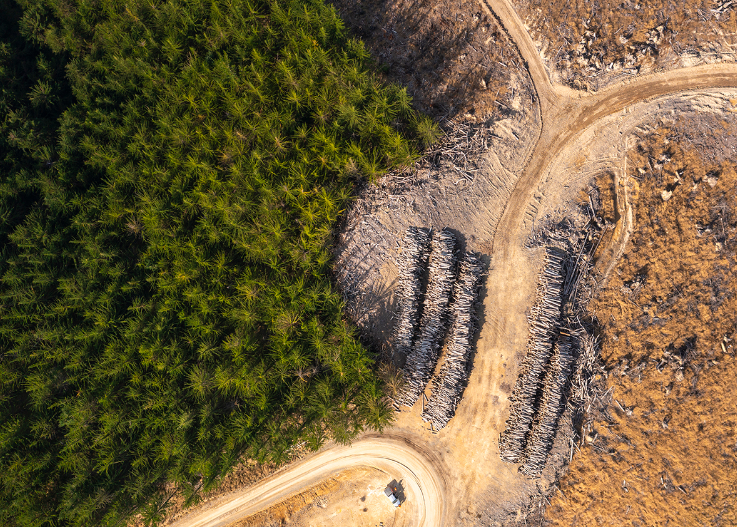Latest News

RETA – An Introduction

Source: Timothy Allan Strategy & Special Projects
The overview of the Regional Energy Transition Accelerator
Priority One has had a commitment to our regional sustainability which was consolidated into a strategy in 2023. This defined four key themes: Transport, Energy, Waste and Land
Within these themes a range of projects have been developed to make progress in these areas including Shift (Transport), Circular Construction (Waste).
Within the Energy theme Priority One has supported the central governments work on the Regional Transition Accelerator (RETA) within our region. In this article we will break down what it is about and in a series of articles we will explore into some of the key topics with local, national and international experts in each area.
- Article One – Geothermal
- Article Two – Biomass
- Article Three – Electricity
- Article Four – Demand Reduction/
- Article Five – Gas.
What is the ‘Regional Energy Transition Accelerator’ (RETA)
Our work within the Energy theme has included supporting the ‘Regional Energy Transition Accelerator’ (RETA) with our region which was developed by the Energy Efficiency & Conservation Authority (EECA) to develop and share a well-informed and coordinated approach for regional decarbonisation.
This was traditionally paired with access to Government Investment in Decarbonising Industry (GIDI) funding to assist with decarbonising projects within industry. Whilst these are no longer available, the research provides a very useful input into our challenges and opportunities.
This work has been done regionally across New Zealand. For our region EECA elected to create a Bay of Plenty + region that included the plantation forestry (Kaingaroa) and Eastern Bay of Plenty Geothermal resources. This was a good decision and helpful for our developing energy strategy.
This work has continued over the last year and the report is now published and available for review including:
A Primer on Industrial Process Heat
The RETA was looking specifically at an important but largely invisible part of our economy called ‘Industrial Process Heat’. In simple terms, industrial process heat is the heat energy used to make products or materials in factories and plants like converting milk into powder, wood pulp into paper or packaging and producing metals and chemicals (e.g. Methanol). Many of these industrial heat applications will use fossil fuels to generate process heat which produces greenhouse gas emissions.
A useful EECA Business Introduction to Industrial Process Heat webinar delivered by Dr Martin Atkins, a Senior Chemical Engineer from the University of Waikato Energy Research Centre offers a nice insight and overview into what it is, how it is constructed and delivered, and how big a part it is within our energy consumption as country.
Why Now?
A useful factsheet published by MFE helps to define why this is becoming an important topic. These include the National Policy Statement for Greenhouse Gas Emissions (from Industrial Process Heat (NPS), and the National Environmental Standard for Greenhouse Gas Emissions from Industrial Process Heat (NES). These collectively support an amendment made to the Resource Management Act in 1991 (RMA) which came into effect in November 2022. This requires regional councils to consider the effects of GHG emissions when assessing resource consent applications.
Specifically, they define the phase out of coal use by 2037 and require consideration and planning around emissions reduction over and above this and to minimise adverse effects on climate change.
Internationally, value chains are more sensitive to emissions and climate change and, separately to any government regulation are driving a change in approach from industry that removes carbon emissions from their manufacturing and supply chains.
Our Region – A Tale of Two Halves.
The sites covered collectively consume 14,741 TJ of process heat energy and emit 281kt pa of carbon dioxide equivalents (CO2e). When we look at this energy source options, our region has some unique opportunities but specific challenges.
Challenges
Our region relies on reticulated (piped) gas and consumes 248kt of CO2e (88% of our total emissions). This provides a high level of friction to switching compared to other regions where there are hard cut offs for the use of coal and other fuels. We will look specifically at gas supply and its use over the forecasted period up to 2050.
Opportunities
Our region is fortunate to have a range of alternatives that could reduce carbon emissions and provide better energy resilience for our region.
Geothermal
The Bay of Plenty Region has natural geothermal fields that range from low to high temperature and are suitable for a range of purposes. These are more well developed in southern Waikato and Eastern Bay of Plenty but are less well understood and characterised in the Western Bay of Plenty. The RETA study has highlighted the opportunities with the low temperature field under the western bay of plenty sub region.
We will be talking to experts in the field and the Bay of Plenty Regional Council about the resource potential across the bay and how this may develop over time.
Biomass
The Bay of Plenty Plus region incorporates significant plantation forestry resources and potential woody biomass. The RETA study investigated the volume and viability of utilising the biomass within the region across the whole forestry value chain. It also delved into the likely cost per tonne for the different grades and residues that are created through processing.
We will investigate the state of this resource and how it is currently accessed and used and some of the opportunities to commercialise this resource. We will also take a look at some of the other competing uses such as alternative fuels which will compete with the same resource.
Electricity
The western bay is a significant energy importer (from Waikato and Eastern BOP) fortunately this primarily drawn from Geothermal and Hydro Generation schemes which presents it as a good carbon reduction pathway for Industrial users.
Our region is currently going through a planning phase for the capital expenditure on our grid and distribution through to 2050 (Transpower and Powerco). Currently demand is placing a strain on the distribution infrastructure and already impacts on our resilience and redundancy ratings.
The RETA highlighted some of the challenges of conversion to electricity for larger users getting connected which are worth exploring. We will take a closer look at where our region is at from an electricity supply and distribution perspective and talk to some of the experienced leaders within our region about their views on the use of electricity for process heat.
Demand Reduction
Always the most cost-effective pathway, the RETA has highlighted there are real opportunities to reduce demand through improving efficiency and shedding demand through business operations. We will look at what businesses are doing in this arena and what we can learn from their initiatives.
Gas
Given our regions reliance on this, we decided to look more closely at what is happening with gas supply nationally and regionally to better understand how these trends and changes will impact our businesses in the next 3 decades. There are also emergent opportunities like gas produced from waste which could leverage the same infrastructure and we will investigate this to better understand how this may develop.
Summary
The RETA study conducted by EECA provides a fantastic lens on an important, but often overlooked, area within our regional industries. Creating better understanding and support for our businesses is important to ensure they can migrate over time to lower carbon energy sources. There are also unique regional advantages which we can leverage if a strategic approach is taken. This work will also fit within our overall Regional Energy Strategy that will look at all of our energy uses across stationery, process, and transport in an integrated manner.
